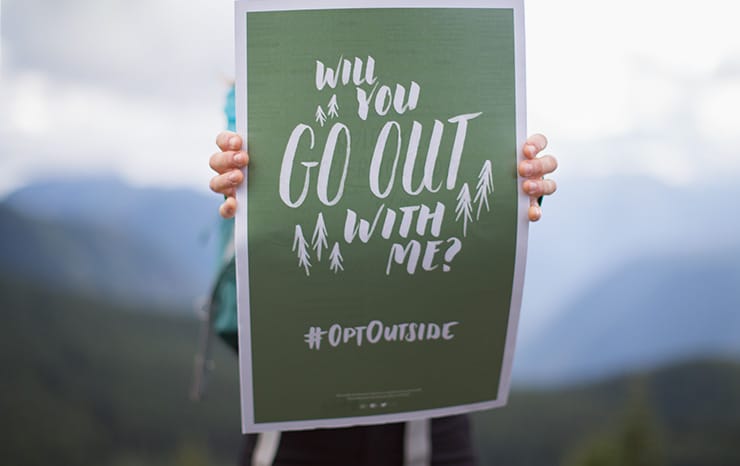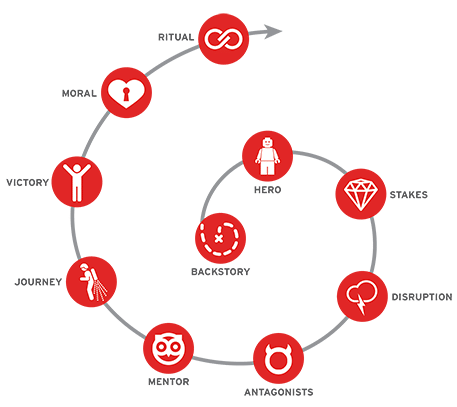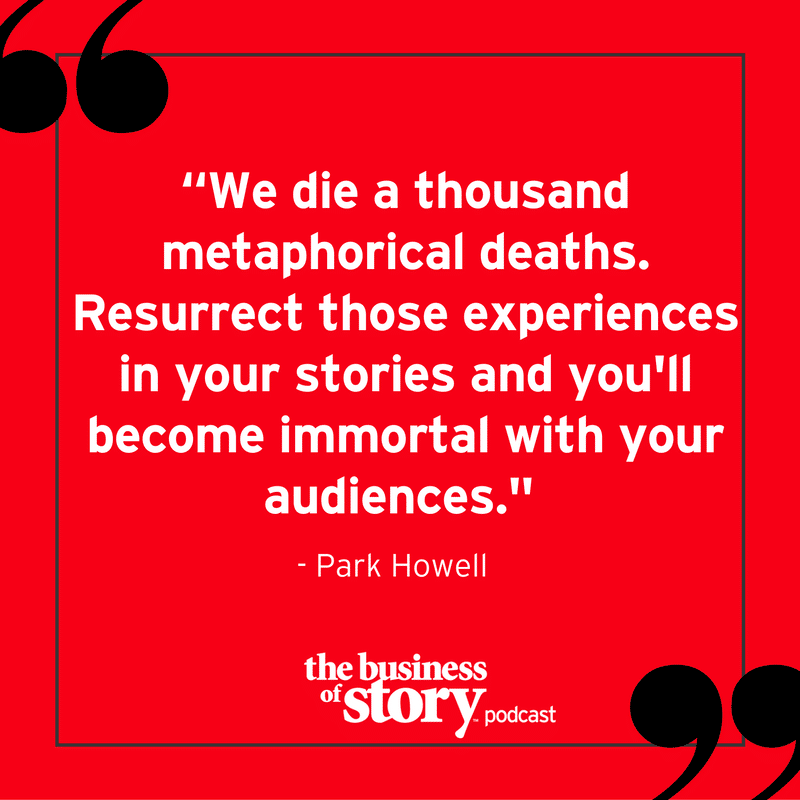The 3 acts of story marketing that’ll make your content king (or queen)
When was the last time you retold a listicle to a friend?
How many parties have you owned by sharing an infographic?
Who have you regaled with a Tweet as of late?
But hear a good story – or better yet, tell one – and you experience how stories bewitch humans.
Business and brand storytelling is the ultimate marketing strategy, and story marketing is the trigger. It beckons your audience into your life and turns your story into their story.
REI did this with their #OptOutside campaign on Black Friday.

Red Bull built the entire energy drink category by giving their brand wings through story.

Charity Water, Virgin Airlines, Uber, Airbnb, even Donald Trump channeling PT Barnum have moved the masses through the compelling use of story marketing.

Not convinced? Check out how Sock Club elevated something as commoditized as stockings with its inventive story marketing.
Is story marketing really a thing?
I define story marketing as a strategic marketing approach that creates a brand experience through audio, visual and immersive storytelling whereby the customer becomes the center of the story to drive profitable engagement.
I use “audience” and “customer” to mean the same thing. A story recipient who is meant to be moved to action by the storyteller.
Regardless if your audience is leadership, staff, employees, vendors, shareholders, stakeholders or customers, you’re always selling something with business storytelling. A new direction. Innovation. Camaraderie. Mission, Vision, Values. Efficiency. Product. Service. You.
Story marketing is a strategic marketing approach that creates a brand experience through audio, visual and immersive storytelling whereby the customer becomes the center of the story to drive profitable engagement. – Park Howell
Story marketing is about transporting your audiences through a well-crafted brand story strategy.
The 3 acts of story marketing
The primary elements of story marketing are captured in three phases: or three acts, as I prefer to think of them.
Act I: Clarifying your brand story
The four primary story elements are a unique market position, emotional promise, authentic personality and compelling purpose. The six other strategic narrative elements of our proven Story Cycle system include audience, stakes, disruption, antagonists, journey, moral and ritual.

Act II: Story capturing
The second element of story marketing is what I call story spotting: finding stories in the wild that support your brand story through actual events, moments and aha experiences that are products of your customer engagement.
These stories, found both internal to your organization and external with your customers and vendors, are real-world examples of how you live into the promises your brand makes and keeps with your audiences.
It’s not as easy spotting stories as you might think. We were raised on rote learning and are so conditioned to features-and-benefits communications, that our default is facts, stats and jargon. In fact, most of us tell stories in a dissertation of “this happened and then this happened and then blah, blah, blah…”
This is NOT a story but a linear recounting of events.
A story, as outlined in Shawn Callahan’s book Putting Stories to Work, typically have a specific timestamp (when something happened), a location stamp (where it happened), a central character (protagonist), action (something specific that happened) leading to an aha moment (a lesson).
The last point is a biggie. Because yes, your business and brand stories should actually make a point. After all, when was the last time you were bored into buying anything?
Once you’ve clarified your brand story, and then captured stories in the wild to support your new business narrative, now its time to reveal them to your audiences.
ACT III: Your story marketing theater
Carl Philipp Gottfried von Clausewitz was a Prussian general and military theorist who coined the term “Theater of war” to define important areas in land, sea and air where military events occur. Now you and your brand may not be at war, but make no mistake that it’s dog-eat-dog out there in the Attention Economy.
Story is your secret weapon.
Equip yourself for the story marketing theater by building a library of the stories you need to engage with your audiences and move them to action.
Start by recording your stories in short two-minute videos for your Facebook group, YouTube channel and website. Then atomize the content as social media wizard Jay Baer recommends.
Feature the audio from the video on a platform like SoundCloud for use in podcasts, blogs or a library of stories your sales team can call upon in a pinch.
Transcribe the audio and use the dialogue in blogs, white papers, email marketing and other written forms.

Use pull quotes from your video, like the one above, in graphic memes on Instagram, Snapchat, and Twitter. And all of the above content ideas can be used in sales presentations, newsletters, in-house social platforms and in any inbound or outbound marketing to help you rise above the fray and be heard.
Today’s marketing is evolving at a mind-numbing pace due to our technological advances. But our brains have essentially remained the same for thousands of years.
Therefore, it is the ancient and proven power of story that connects us with our fellow humans and moves them to action.
Story on!












at 10:46 am
Thank you for sharing this post Park!!!
Your reply is more practical and helpful. I hope it will be helpful for too many people that are searching for this topic. Great post!
Can’t wait to follow and learn.
at 8:18 am
[…] I got into this profession using my degrees in music composition and theory and journalism/communications from Washington State University to help companies craft and tell compelling stories that grow their enterprise and their people. I started in public relations and moved into advertising and brand story strategy. […]
at 8:23 am
[…] It’s the kind of ad that relies heavily on brand storytelling and defining a narrative (Story driven marketing). […]
at 10:20 am
[…] Story marketing is a powerful email strategy. Your music studio is full of inspirational stories. It’s full of stories about kids that were shy, kids that hadn’t really found their thing yet, kids that tried sports but didn’t feel like a success in their athletic efforts. They took music lessons at your studio and became less shy, became more confident, experienced success in a way that they never had. You probably hear these stories all the time from your customers. They’ll say it to you in passing. These are great stories to share in an email. […]
at 3:53 am
[…] further reading, please check out one of my favorite saved articles in my bookmarks called “What is Story Marketing and How You Can Master it” and get inspired by new […]
at 11:40 pm
[…] Heidi. This marketing activity won many marketing awards in 2013 and it is world-renowned. These stories marketing are involving many people because they all desire to care […]
at 5:29 am
[…] Stories: Information is the boring form of a story and usually don’t go too far, but if we can turn it into a story, people will give their attention as they are more personal and trustworthy. […]
at 8:03 am
[…] https://businessofstory.com/what-is-story-marketing/ […]
at 11:43 pm
[…] the help of story marketing, you […]
at 4:32 pm
[…] using an anecdote or a story in your influencer blog post can help make the content more relatable to the […]